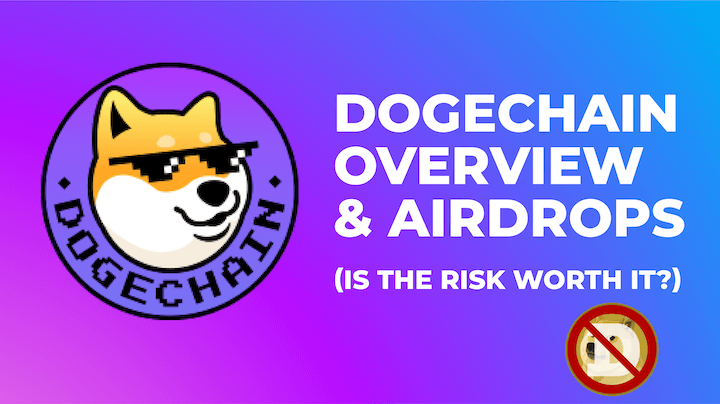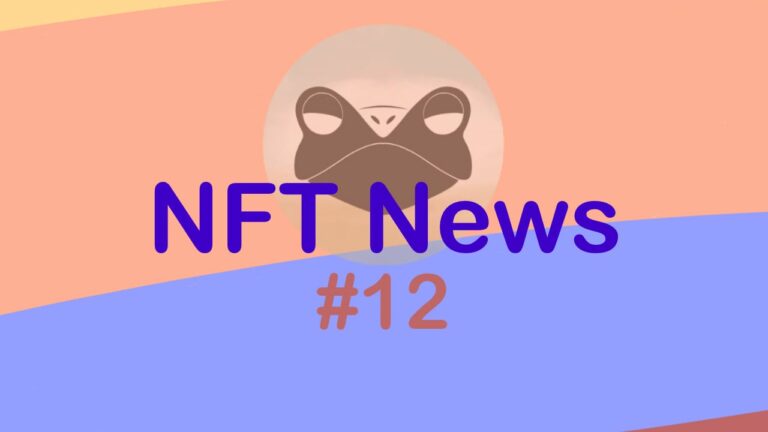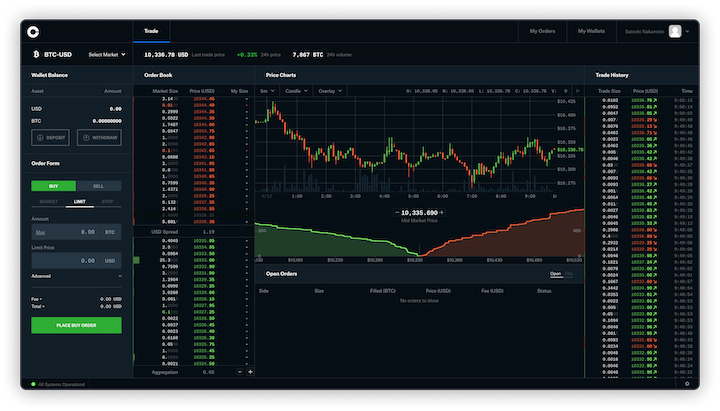Origin Protocol (OGN) – Defi & NFTs
Origin Protocol, and its underlying crypto token OGN, aim to bring DeFi and NFTs to the masses. Origin does this through their two main blockchain products — NFT Launchpad and Origin Dollar (OUSD).
NFT launchpad has helped creators self host record breaking NFT sales. We’ll briefly cover the NFT platform and some of those sales in this article. Personally though, I’m most interested in OUSD, a stable coin that you can hold in a non-custodial wallet, like MetaMask or Ledger, and earn automated DeFi returns. You don’t have to do anything else to earn roughly 10% other than hold the token. No lockups in Aave, Compound etc.
This Origin crypto review article will also touch on Origin Protocol’s native governance and value accrual crypto token, OGN. And while we’ll analyze Origin Protocol’s business model and ideas – none of this is investment advice. This article, and the videos contained within, is only entertainment that intends to give you a glimpse into my thinking and exploration around the protocol and its big picture idea. Do your own research before you make any crypto investments.
Origin Protocol Team
One of the most compelling things behind the Origin Protocol is the team.
To begin the founding engineer is Yu Pan, who was one of the 6 founding members of PayPal and the first employee at YouTube. Outside of that, there are other notable founders and leaders from major tech companies that have created previous start ups that were eventually acquired by giants like Walmart and Google.

The Origin Protocol Token – OGN
The native governance and value capture coin / token of the Origin Protocol is OGN. The OGN token is available for purchase on Coinbase, Uniswap, Binance and most exchanges. It’s price, like most cryptocurrencies, fluctuates wildly with the markets or news about the project.
Full Disclaimer: I own some OGN.
OGN Token Price
While none of this is investment advice, this review of the concepts and ideas behind Origin would not be complete without diving briefly into the current and historical price and market cap.
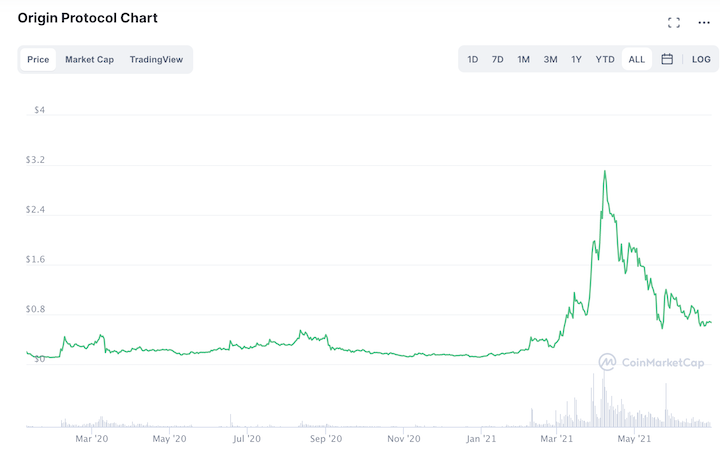
At the time of this writing, OGN is hovering right around .69. That’s quite a bit lower than it’s all time high of 3.39, but also higher than it’s ICO price of ~11 cents in 2018.
Keep your tokens safe using a crypto hardware wallet
Origin Protocol Market Cap
Right now OGN has a marketcap of 218 Million. Making it the 141 biggest coin on coinlist. These are far from exact competitors, but compare OGN’s marketcap to that of another popular NFT protocol, Enjin – $955 M – or another stable coin creator, Maker – 2.5 Billion – and OGNs market cap seems set to grow if they can achieve their vision.
Staking OGN for Passive Income
Before we get into Origin’s Products, I want to tell you how I make passive income by staking Origin Token. Being that I’m in on OGN for the long haul, I actually staked my OGN to earn 25% APY on their native OUSD dApp. That means I took the OGN that I owned and locked it up into a smart contract for 365 days (the longest lock up period) so that I could get the highest return (25% APY) over that time frame. Your returns come in the form of the native crypto token, OGN, as well.
Stake OGN
If you have OGN, rather than day trade it on exchanges, you can lock up your OGN tokens for a certain time frame to receive more OGN coin rewards.
The idea behind staking OGN is that the Origin company wants the holders of their native crypto token to continue to “promise” long term support as they get all of their ideas off the ground and build out the protocol. They don’t want the OGN token price tanking, and everyone losing faith too early.
Therefore, they incentives these early adopters to “hodl” through staking and in return those staked funds receive newly minted tokens based on a transparent inflation rate set by an algorithm (rather than politicians). The longer you lock the tokens, the higher APY you’ll received (capped at 1 year, 25% APY).
I don’t really enjoy short term trading and do enjoy this project. I was going to hold anyway, so I might as well lock up that hold and earn a 25% return. Hooray, computer money!
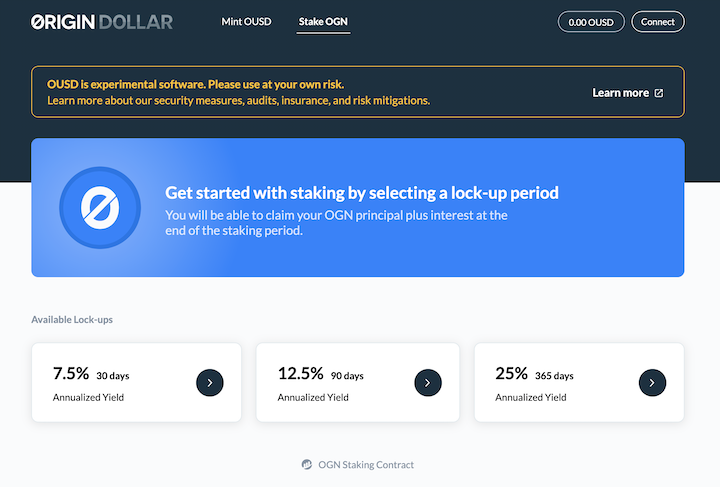
Learn about trading crypto perpetuals on dydx decentralized exchange
The Origin Dollar – OUSD – A Stable Coin With Automated Defi Returns
Speaking of computer money, let me start by saying, “I love stable coins!” Not only are they a necessary path for crypto to be adopted into everyday commerce, but also they fascinate me from a game theory / tech standpoint.
A Quick Tangent on Stable Coins
In 2018, I made a random YouTube video about minting DAI from a MakerDAO CDP. MakerDAO at one point put that video in their official docs ????. I made the video because their concept of a crypto collateralized debt position was so unique, at the time. These were the days before the word “defi” existed.
MakerDAO “created Defi” by looking to create an alternative way to peg an on-chain coin to a more stable asset like the US Dollar. They didn’t want to have to “Tether” those on chain coins to real world fiat assets in a centralized, government controlled bank, as that seemed counter intuitive to the ideals of decentralization.
Their solution was to have people lock up ETH as collateral in order to mint this new form of on-chain stable coin, DAI. If the DAI was never returned and the ETH collateral fell below a certain threshold, the ETH was auto liquidated to uphold the value of the system. This concept, which they called a Collateralized Debt Position (CDP) birthed Defi.
Learn more about maker dao cdps and how to take out a loan on the blockchain.
Since then, TONS of Defi projects have spun up that allow you to do all sorts of creative things, but primarily they work around the same concept of locking up your collateral to borrow against or mint a return. As of the time of this writing, there is over 50 Billion in DeFi and a lot of really fun experiments going on.
The leading defi protocols are AAVE and Compound — these protocols essentially allow you to borrow and lend assets peer to peer. Not surprisingly, a lot of the borrowing and lending takes place in stable coins.
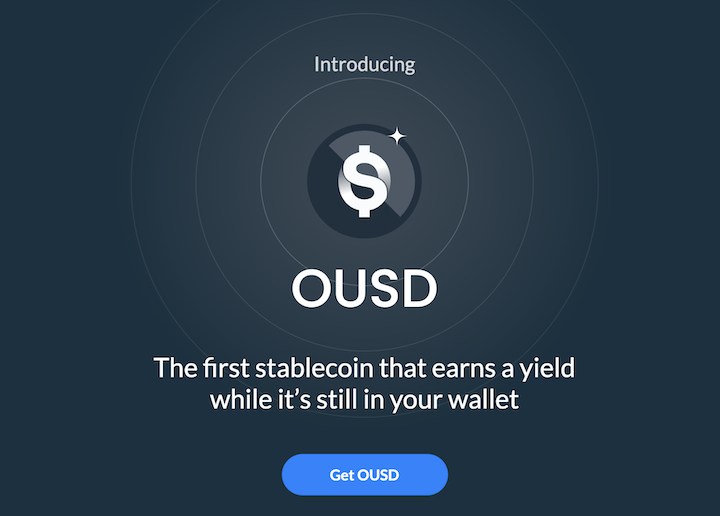
The OUSD Stable Coin Token
Arguably the biggest stable coins in the game are USDT, USDC, and the aforementioned DAI. This post won’t go that deep into these stable coins, but they all have huge market caps and they all see a lot of borrowing and lending action on DeFi protocols and a lot of market making / liquidity action on both centralized and decentralized exchanges.
However, as an owner of those stable coins you have to actively put those coins to work for you by taking positions in DeFi protocols.
Side note for centralized APY Ideas:
Another option is to store your stable coins within centralized, custodial wallets like BlockFi & Celsius. The rates often reach 10%, but they are usually lower than the market rate that you can get in Defi. Also, storing your coins and not controlling your private keys creates a centralized risk – either foul play by the company, no transparency where your money is actually being stored, or a modern version of “a run on the bank”. There’s a common saying “not your keys. not your coins”
HOWEVER, I actually use centralized solutions as well as DeFi solutions because I’m not a purist / kinda lazy / think there are some advantages to spreading out your risk. But that’s another post.
If you want to try out a centralized platform, use my referral code for either Blockfi or Celsius and we’ll both earn a reward.
Don’t have any crypto yet? Buy it on Coinbase.
Anyway, if you want to simply hold USDT, USDC, or DAI in a decentralized non custodial wallet like MetaMask, nothing will happen in terms of yield. You have to actively lock them into one of the decentralized protocols. This requires doing some research to find the best rates and, facing the sad reality of paying crazy gas fees every time you want to move in and out of a position, or spread your coins over multiple defi protocols.
That is where the Origin Dollar’s value proposition comes in. By simply holding it in your wallet, you’ll see it grow — because the smart contract automates out the yield farming. Beyond that, it theoretically saves a lot of transactions for everyone if you want to pay somebody with it.
If you needed to pay someone and had your USDC locked up in a contract, you’d have to unlock it and then send. That person, if they wanted to receive yield would then have to lock the USDC you sent them into the contract. With OUSD, you just send it and the portion of yield on the amount you sent begins building in the recipient’s wallet the moment they receive it.
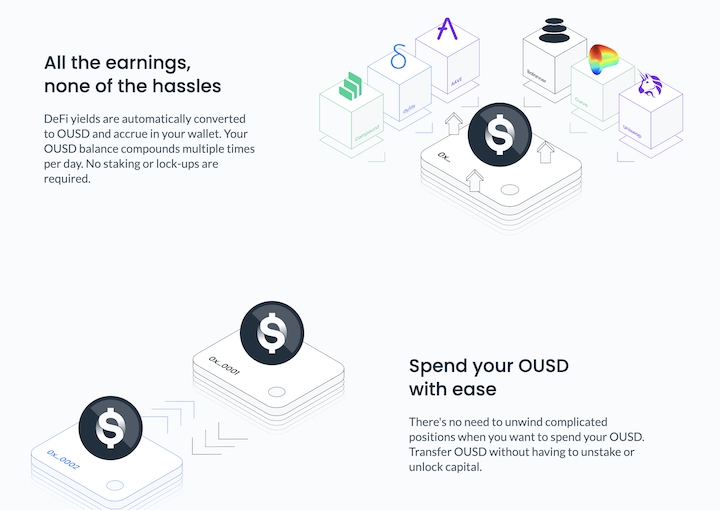
How OUSD Works
The number of OUSD in your wallet goes up with time (earning a variable APY) as the value of each APY stays stable around a dollar. Whether someone sends you OUSD or you buy it on a DEX like Uniswap, you’ll start earning the rewards the moment it’s in your wallet. To understand how that happens, let’s look at the other option you can use to get OUSD – minting it.
All OUSD was minted at some point or another. I personally minted some 34 days ago (we’ll get to the returns).
OUSD is created when ever someone locks USDT, USDC or DAI into the now double audited OUSD smart contract. Each OUSD is backed 1:1 by another stable coin, meaning lock up one USDT, USDC, or DAI to mint one OUSD.
By giving the smart contract other “popular in DeFi” stable coins, the smart contract performs automated yield farming. It distributes and moves its stores of USDT/C/DAI around to all the protocols and earns a return. It does all of this transparently, on chain, so that you can monitor what is going on.
As those coins make a yield, the balance of the OUSD in your wallet goes up accordingly.
The best part about the balance in your wallet “rebasing” is that it doesn’t require you to sign or spend anything on gas fees. Once you’re already holding OUSD in your wallet, it all happens automatically without the need to pay gas fees or really monitor anything.
So once the OUSD token is in your wallet, each token’s value remains very close to 1 dollar, but the number of OUSD tokens in your wallet goes up. This is called an elastic supply policy.
What varies is the APY return on OUSD. The rebasing happens a few times a day and the size of the rebase varies based on market conditions.
My Experience With OUSD So Far
Again, this is not investment advice, but let’s look at how my experience has been holding OUSD for the past 34 days.
The value of OUSD will fluctuate up and down a few cents around the dollar, but the interest rate fluctuates wildly. They show the trailing 7 day APY front and center on their site. Since I’ve been following I’ve seen it as high as 17% and as low as 3%.
It doesn’t matter when you get in, as you don’t lock into that specific APY, it just changes with each rebase.
At the time of this writing it says I’m earning about 4% APY, but so far, over my 34 days holding I have earned an average APY of 9.14%. That’s because some time blocks the APY is much higher. Again, it depends on the rates that the automated yield farming is getting on the back end.
9.14% is a lot better than a bank, and beats the most common custodial crypto solutions – Coinbase, Blockfi and Celsius.
The down side is that I did have to spend about $50 in gas fees to allow my metamask to mint OUSD with both USDCT and USDC. Also, if I want to convert my OUSD back into USDT/C/DAI stable coins, I will have to pay a .5% exit fee.
So it doesn’t really make sense to mint and redeem OUSD with a small amount or over a short time frame. The longer you hold, the more it becomes worth it, and the more you hold the more it becomes worth it – as your returns make the gas price and fee less of a factor.
OUSD .5% redemption fee – good news
You might have thought, wait what .5% exit fee!? Well a few things:
- The fee is actually put in place to prevent aggressive attackers exploiting minor arbitrages and trying to take down the system
- The fee is distributed amongst OUSD holders (so you’re getting a piece of other people’s exit fee)
- You don’t have to convert your OUSD back to USDT/C/DAI in order to spend it in the same way you have to unlock a position. I plan to simply use my OUSD to pay people, trade, or buy things like I would any other stable coin. There are circumstances when I would need a more popular stable coin, but ideally I can keep everything in the crypto sphere and just transfer it around, never having to “redeem” and incur the fee. This will become increasingly more likely as the OUSD coin popularity grows. **Please add an OUSD/ETH pairing on uniswap Origin Protocol 🙂
The Risks of Holding OUSD
Like anything in crypto, or anything offering a high return, OUSD is surely not without its risks. In fact, their smart contract was hacked for $7M in the early months of their launch.
On the bright side, their well funded, high profile team reimbursed everyone that was hacked. The hack also happened in what was the super early pre-audit “test if there is demand phase”. At just over 6 months old, we’re still in that phase, but they have since double audited their smart contracts and really focused on security.
Here are some of the risks that can be associated with OUSD (and really any stablecoin or crypto):
- The smart contract/DAO itself can be hacked
- Your personal metamask can be hacked. (Use a hardware wallet! Compare ledger vs trezor)
- Public sentiment can change wildly and the coin could lose it’s peg to the dollar. (Though this doesn’t matter as much for OUSD as it is backed 1:1. So you can always trade it back into the vault for the other stable coins)
- Any of the smart contracts that OUSD is using in the automated yield farming could be hacked
- Other unforeseen risks…
All and all, I still put some stable coin savings into OUSD because I liked the idea and wanted easy, diversified Defi returns.
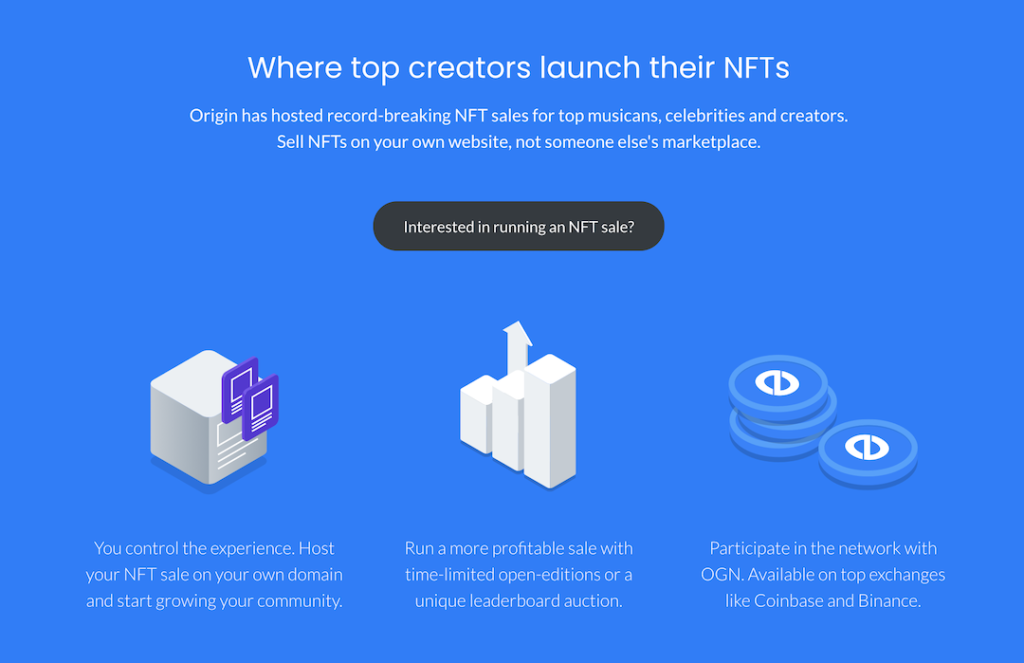
The NFT Launchpad
Perhaps the most public facing aspect of the Origin Protocol revolves around NFTs. NFTs are hot right now, and Origin’s NFT Launchpad has been behind some of the biggest initial sales. (3LAU’s collection of 33 + prizes – $3.6 Million, 1 of 1 Charlie Bit Me – $761K and many more).
Origin’s NFT launchpad is different than Opensea, Superrare or other secondary marketplaces. Their launchpad is precisely that, a launchpad. NFT launchpad allows someone to host an initial NFT sale on their own website with your own branding. The tech runs the logistics of the auction and allows buyers to pay in crypto (like OUSD) through their web3 wallets or with credit cards.
How To Use Origin Protocol – NFT Launch Pad
As of now, you have to apply to work with Origin. They seem to want to keep their clientle exclusive. I am unaware of the cost or the % they take on the back end.
However, and this is pure speculation, I like to think that the ultimate goal is to make setting up an NFT sale on your own website as easy as using a wordpress plugin — but we shall see.
Closing General Thoughts on Origin Protocol & NFTs
Origin is in a great place to become the shopify of NFT’s — allowing people to host their own NFT stores. I think NFTs are still in their early stage and just now showing signs of what they eventually will become.
I sold some NFT’s of my own back in the day, and have worked on teams that have helped sell the last professional photos of Kurt Cobain as NFTs. My team and I also put together the video aspect of the NFT for Tim Berners-Lee which sold for $5.4 Million USD through Sotheby’s.
So NFTs are certainly exciting, and my team and I are excited to have our hands in them. We’ve been in the blockchain space for a while, so if you have an NFT project and are looking for help, please don’t hesitate to reach out: mark@peerthrough.com .
That said, I still think there is some tweaking to do before we see the full utility of NFTs and I’m excited to write a post on that shortly.
Origin Protocol Conclusion
In conclusion, the Origin Protocol and its underlying OGN token and stable OUSD token are an interesting project with a solid team. I personally like playing around with their dApps, staking OGN token, and holding OUSD for easy returns.
Ultimately though, this is a crazy risky new frontier and none of this is investment advice – I just like sharing my thinking and moves in the space.
Let me know if you have any more info on Origin in the comments. Thanks for reading!

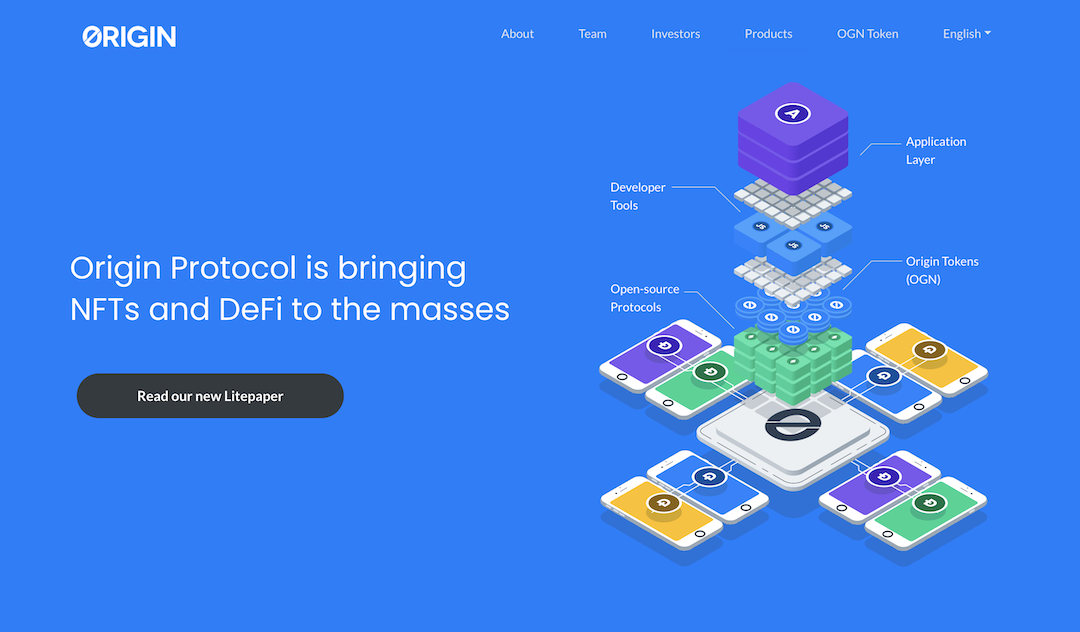
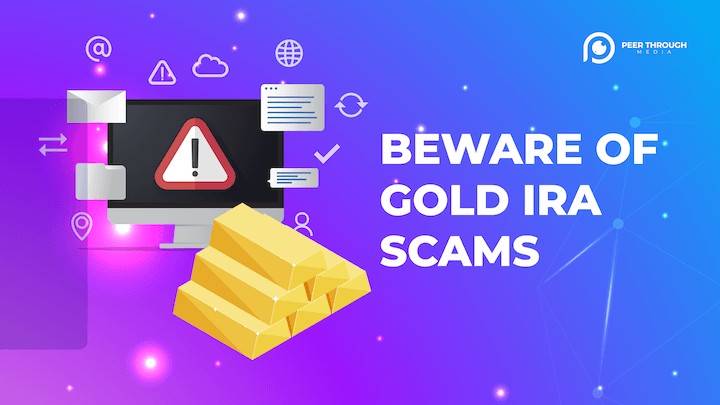
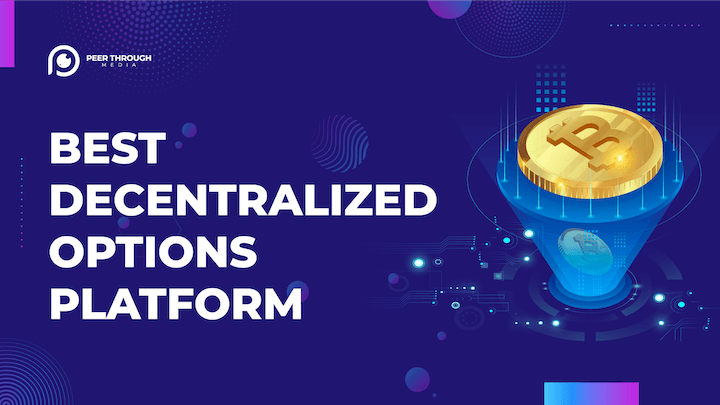
![What Is The Safest Way To Store Crypto? [2023]](https://www.peerthroughmedia.com/wp-content/uploads/2023/01/SAFEST-WAY-TO-STORE-CRYPTO-768x432.jpg)
